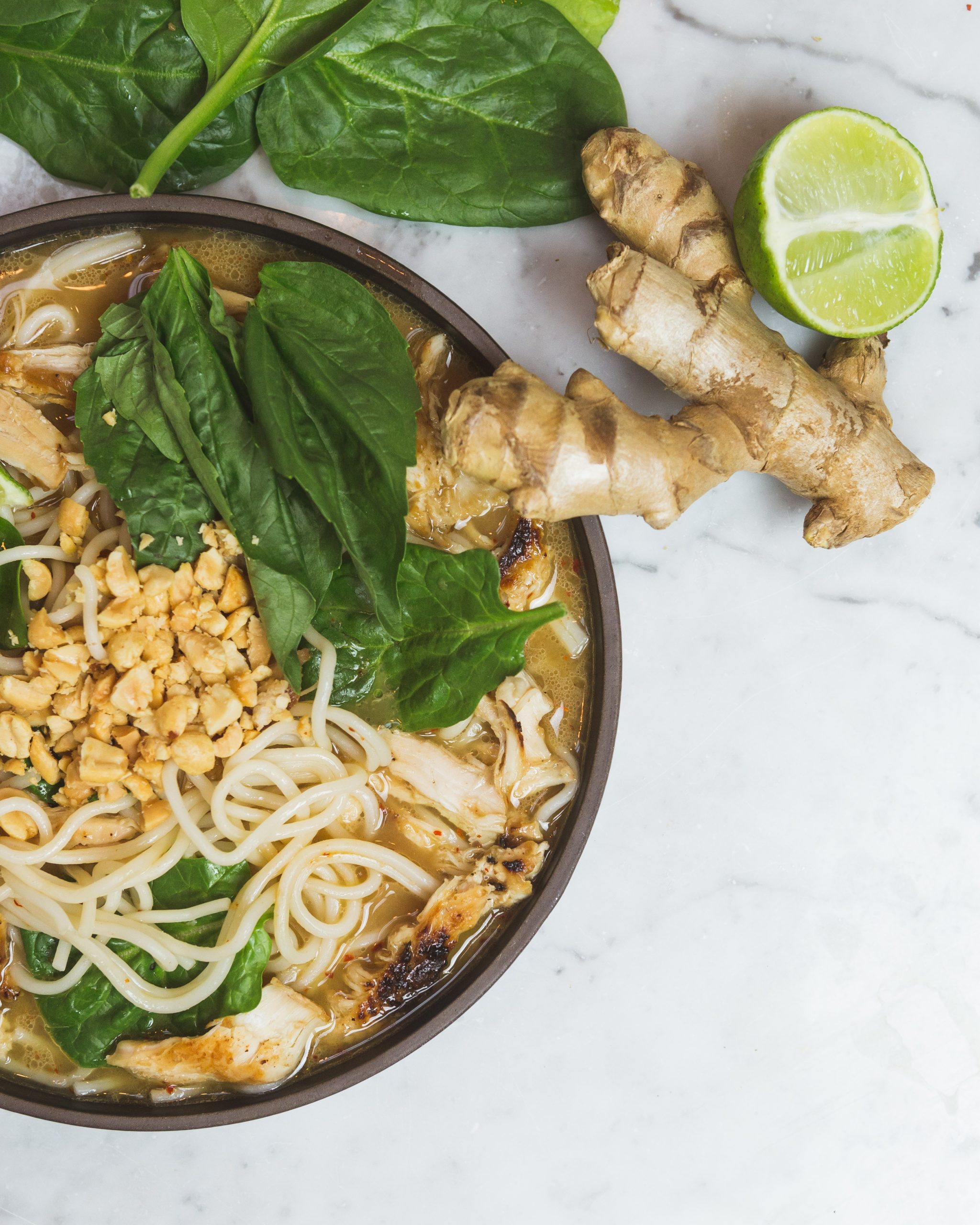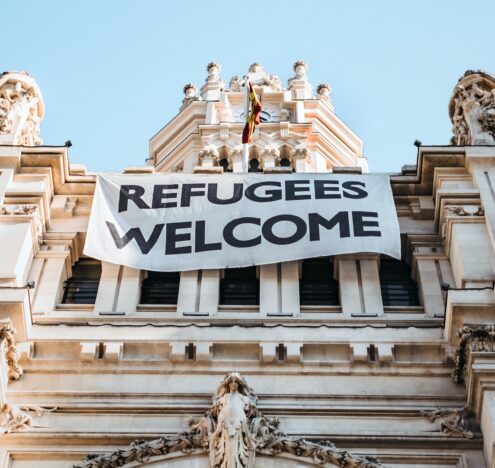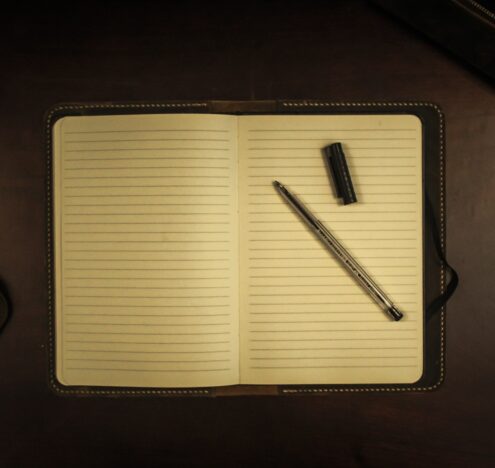“What’s On Your Table?” is a series of articles exploring the relationship between food and systems of power, and how our dining tables shape global cuisine and family histories. You can find a recipe at the bottom of each piece to join in on the meal.
When was the last time you ate Pad Thai? Chances are you’ve indulged in Thai cuisine at some point over the past 20 years. Or how about the last time you chomped on some crunchy kimchi or slurped salty ramen, heard about the terrific Tiawanese food scene, or craved a Peruvian Ceviche? Distinct cultural cuisines have grown into international cravings and it is not entirely due to how good a sweet and salty Pad Thai tastes. Actually, for foods like Pad Thai, we can thank the Thai government for prompting us to consume so much of it.
Let’s take a step back. A central theme in international politics is a competition over who can cook up the most power. Over time, different forms or tools of diplomacy have been conjured up to fulfill the goals and grow the power of countries around the world. Countries that fall somewhere between superpower and small island nation, otherwise known as middle powers, have to get creative. From the inability to use hard tools like military action or economic prowess for addressing all global challenges, middle power countries have grown their soft power options spanning from cultural exportation to public diplomacy.
This is where gastrodiplomacy was born. An effort to influence a foreign public through the cuisines and cultural foods of a nation, gastrodiplomacy has now been baked into dozens of counties’ foreign policy agendas, with very real and quantifiable campaigns taking place globally. Although world leaders and diplomats have been eating their way through international meetings and summits well before the 2000s, today we are witnessing country after country begin to curate and quite literally cater their food to the world and the publics of foreign friends and foes.
THE PAD THAI PIONEER
Take for example Thai Cuisine, the original epic gastrodiplomacy campaign. It was notably the first major gastrodiplomatic campaign and arguably the most successful. In 2002, the Thai government started training, exporting, and funding thousands of Thai chefs around the world. It increased exports of staple and common Thai ingredients, and loaned Thai nationals living abroad millions of dollars in financial support. As a result, the “Global Thai” gastrodiplomacy campaign was a smashing success.
Today, the Thai government credits the intentional gastrodiplomatic campaign from nearly 20 years ago for driving a resounding increase in tourism, exports of staple ingredients, and a positive international perspective change of Thailand as a place of sex tourism and elephants, to a culinary destination and foodie haven. As the saying goes, the easiest way to win hearts and minds is through the stomach. And the Thai government truly understands how to win over the bellies of the international community.
Effective and affordable, not to mention fun, many countries have bought into the idea of food as a diplomatic tool. And they often employ gastrodiplomacy for fundamentally economic or global rebranding purposes.
In the years following the Thai Campaign, countries around the world have since pursued gastrodiplomacy in real and tangible ways. South Korea funded a Kimchi bus to travel the world and expose foreigners in over 30 countries to their traditional fermented flavors. Lebanon launched a “Tasty Lebanon” campaign to maintain traditional culinary practices in the expansive Lebanese diaspora. Japan launched a global sushi campaign and secured its nation’s cuisine, “Washoku” on the UN Educational, Scientific, and Cultural Organization’s Intangible Cultural Heritage List, a record of important human traditions and cultural processes. All the while, many others like Peru, Malaysia, and Taiwan have launched food festivals to encourage foreigners to pursue their unique cuisines.
Effective and affordable, not to mention fun, many countries have bought into the idea of food as a diplomatic tool. And they often employ gastrodiplomacy for fundamentally economic or global rebranding purposes. For folks who love to eat foods from around the world in their own backyard, these efforts have relatively been welcomed and embraced. But with any effective foreign policy tool, at some point, the most powerful will seek to use it. And use it they have.
GASTRODIPLOMACY, A BITTERSWEET REALITY
In 2019, the US launched a gastrodiplomacy campaign targeting the Moroccan citizenry. I was an intern for one of the US governmental asgencies responsible for implementing that campaign. Starry-eyed and fresh from writing my thesis on major gastrodiplomacy campaigns and their goals around the world, I found myself with the unique opportunity to observe and aid in the implementation of a real gastrodiplomatic effort.
The goal was clear and simple. America wanted to sell meat to Morocco but needed Moroccans to trust that America could produce halal meat. In order to influence the Moroccan public, US diplomats developed a week of events strategically geared toward the Moroccan meat processing, packaging, and selling industry; the Moroccan culinary sector; and the everyday ordinary Moroccan citizen. American meat had never been seriously sold and exported to Morocco before 2019 and this non-stop beef and burger-filled week was to be the key to those initial sales. Winning Moroccan stomachs over with an impressive burger would, in theory, lead to a few million dollars in meat exports with the potential for growth in the future. It was all carefully curated — the US even brought in a Palestinian American chef who could add legitimacy to the claims being made speaking to the Moroccan stakeholders, in Arabic, about the quality and potential of American meats.
For America, the gastrodiplomacy campaign in Morocco was purely economic, an effort to sell industrially produced meat to a market halfway across the world.
As I ate my way through the week, chatting about American and Moroccan cuisine and quite literally serving ordinary Moroccan citizens the meats and cheeses that my country shipped all the way across the Atlantic, I began to realize the true purpose of American gastrodiplomacy. For America, this was purely economic, an effort to sell industrially produced meat to a market halfway across the world.
In the end, we had a cooking competition pitting our American chef against top Moroccan chefs in an effort to show to thousands of Moroccans that American meat could be used to make traditional American dishes but also Moroccan staples. The chefs frantically grilled burgers and Moroccan dishes, while US and Moroccan officials taste tested and gave their charming approval in front of the Marrakech crowd, in Jemaa el-Fna, the bustling famous Marrakech square.
The campaign in Morocco left me with an inner crisis. The creative and frankly fun diplomatic tool I had studied in college was, in practice, being used to expand American industrial meat practices that could deteriorate and destroy the cultural food practices of other countries. A tricky truth to swallow.
WHAT WE EAT CAN DEFINE OUR FUTURE FOREIGN POLICY
There are powerful forces behind the foods we eat, and they might not always be the flavors that deliver tasty dishes to your dinner table. Although most Westerners will probably benefit from the current gastrodiplomatic food frenzy, there is a growing need to evaluate how America uses gastrodiplomacy and why we might spread our cuisine.
If we take a look into the deeper culinary traditions of the United States and all the fantastic fusions between the diverse food traditions present in this country we might see a hopeful path towards an American gastrodiplomacy campaign designed to connect and unite those that might look sourly to the States at this point in history. Gastrodiplomacy might be our chance to reunite with the world. Our food fusion culture, or our regional cuisines that highlight America’s resilience and unique culinary traditions should define our foreign policy. We could use our unique culinary traditions and regional specialities to reconnect with the world to secure the trust of our allies and beyond.
Next time you eat, take a moment to think. Are you eating someone’s foreign policy or are you building on the culinary traditions that could become the next gastrodiplomatic strategy of your country? As we continue to expand our palettes and as the world grows more interconnected, we must realize countries will continue to use food as a diplomatic and geopolitical tool. But if used with the right intentions, implemented with care, and created with empathy for the many food cultures that exist in the world, there is an appetizing chance we can serve up a food foreign policy for good.
BUTTERNUT LASAGNA WITH WILD MUSHROOMS AND SAGE RECIPE
A delicious vegetarian or vegan main dish, perfect for your autumn holiday table!
Ingredients:
Small butternut squash (you’ll need about 4 cups, roasted)
- ½ a sweet onion, sliced into big wedges
Mushroom Filling:
- 2 tablespoons olive oil or butter
- 1 ½ lb mushrooms, sliced (cremini, button, shiitake, portobello, wild mushrooms, etc.)
- 1 fat shallot or ½ onion, diced
- 4 garlic cloves, chopped
- 2 tablespoons fresh chopped sage
- ½ teaspoon salt
- optional – feel free to add a couple of handfuls of baby spinach or greens and wilt them.
Ricotta Mixture:
- 1 lb ricotta cheese (or use this vegan tofu ricotta recipe) If using the tofu ricotta, no need to add more salt. Just nutmeg
- ½ teaspoon nutmeg
- ½ teaspoon salt
Butternut Puree:
- 3 tablespoons olive Oil
- 3–6 tablespoons water
- 1 teaspoon salt
- ½ teaspoon pepper
- ½ teaspoon garlic powder
- 1 1 /2 cups grated mozzarella cheese or sub vegan “meltable” cheese
- ½ cup romano or parmesan ( about 1 ounce) or sub vegan
- No-boi Lasagna Noodles (uncooked)
- Garnish with 9 crispy sage leaves fried in butter
Cooking Instructions:
Cook Butternut first.
- Preheat oven to 425 F. Cut butternut squash in half, scoop out the seeds and place open side down on a parchment-lined baking sheet. Place sliced onion next to it and drizzle it with a little olive oil. Roast until fork-tender, about 30-40 minutes. Let cool.
Lower oven to 375F.
- Make the mushroom filling while the squash is roasting: In a large skillet, heat the oil or butter. Add mushrooms and shallots and salt, and saute over medium heat, until the mushrooms release their liquid and begin to brown. Add the garlic, sage and pepper. Cook until garlic is fragrant, about 2-3 more minutes, turn the heat off. Toss in some spinach or greens at the end and wilt for extra nutrients. Taste and make sure the filling has enough salt and pepper. You could also add a little truffle oil. You could make this 1-3 days ahead and refrigerate if you’d like.
Using a fork, mix the ricotta cheese with nutmeg and salt.
- Now make the Butternut Sauce: When the butternut is cool enough to handle, scoop all the flesh out into a food processor or blender. You should have about 4 cups. Add the roasted onion, olive oil, water, salt, pepper and garlic powder. Puree until smooth. You will need at least 3 1/2 cups pureed and you want it to be almost saucy and spreadable.
- Now you can start assembling the lasagna. In a greased 9 x13 inch baking dish add a cup of the butternut puree and spread out into a thin layer. Top with lasagna noodles. Add ½ of the ricotta mixture and spread out evenly. Top with half of the cook mushrooms. Sprinkle with ½ cup grated mozzarella and a couple tablespoons romano cheese.
- Add more lasagna noodles. Spread out the rest of the ricotta mixture as evenly as possible. Spoon half of the remaining butternut puree, erring on the side of less than half, so you have enough to cover the top (save at least 1 ¼ cups for the top.) Add the remaining mushrooms and all the good bits ( onions and sage) and sprinkle with another ½ cup shredded mozzarella and a couple tablespoons parmesan.
- Place the final noodles over the top. Lather with the remaining butternut puree and sprinkle with the rest of the cheese ( or make the creamy béchamel sauce.- See notes. ) You could assemble this 1-2 days before baking.
Cover tightly with foil and bake in 375 F oven for 40 minutes. Uncover and continue baking 15-20 minutes until golden, bubbly, and crispy on the top!





















